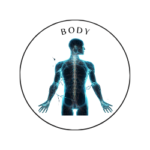 Mind
Mind
- Digital and Modern Well-being
- Mental Health and Emotional Well-being
- Mind-Body Connection and Holistic Health
- Parenting and Family
- Personal Growth and Development
- Relationships and Social Well-being
- Stress and Relaxation
- Therapeutic and Creative Practices
- Trauma and Recovery
- Work, Productivity, and Discipline
 Body
Body
 Fitness
Fitness
 Food
Food
 Beauty
Beauty
CrossFit What You Need to Know

CrossFit: What You Need to Know Before You Start
CrossFit has exploded in popularity over the last decade, becoming a go-to fitness regimen for people of all ages and abilities. Combining elements of weightlifting, gymnastics, endurance training, and high-intensity interval workouts, CrossFit promises to deliver a full-body workout that’s both effective and challenging.
If you’ve been considering giving CrossFit a try but are unsure what to expect, this guide will walk you through everything you need to know before diving into this intense and community-driven workout program.
What is CrossFit?
At its core, CrossFit is a strength and conditioning program designed to improve overall fitness by focusing on multiple domains, including cardiovascular endurance, stamina, strength, flexibility, power, speed, coordination, agility, balance, and accuracy. It’s a high-intensity, functional fitness training style that prepares you for the “unknown and unknowable,” using varied, intense exercises drawn from different disciplines.
The official CrossFit methodology combines “constantly varied functional movements” like squats, deadlifts, box jumps, running, and bodyweight exercises, performed at high intensity. These movements are designed to mirror real-life activities like lifting, jumping, and carrying.
The Benefits of CrossFit
CrossFit’s unique structure and community focus make it appealing to a wide range of people. Here are some of the key benefits:
- Full-Body Workouts: Each workout involves a combination of strength training, cardiovascular exercise, and flexibility, offering a well-rounded approach to fitness.
- Variety and Excitement: Workouts change daily (known as WODs—Workout of the Day), keeping things fresh and preventing workout boredom.
- Community Support: CrossFit is known for its strong, inclusive community. Many CrossFitters find motivation and camaraderie by working out in groups, encouraging each other to push harder.
- Scalable for All Fitness Levels: Whether you’re a seasoned athlete or just starting your fitness journey, CrossFit can be scaled to suit your abilities. Most exercises can be modified to accommodate different fitness levels or any existing limitations.
- Improves Functional Fitness: The emphasis on functional movements in CrossFit can help improve your day-to-day physical performance, from carrying groceries to playing sports.
What Happens in a CrossFit Class?
A typical CrossFit class lasts about 60 minutes and usually follows this structure:
- Warm-Up: Classes begin with a warm-up that prepares your body for the intense workout ahead. This could involve light cardio, stretching, or mobility drills.
- Skill or Strength Training: The class then focuses on a specific skill (e.g., pull-ups, double-unders, handstands) or strength work, such as squats, deadlifts, or overhead presses.
- The WOD (Workout of the Day): This is the core of the class and varies every day. It might be a combination of exercises like kettlebell swings, running, burpees, and Olympic lifts, all completed in a set amount of time or for a set number of rounds. WODs are designed to be intense and push you to your limits.
- Cool Down: Classes typically end with stretching or mobility work to help your body recover and prevent injury.
Key CrossFit Terminology to Know
CrossFit has its own unique lingo, and if you’re new, some of the terms might be confusing. Here are a few to get you started:
- WOD: Workout of the Day. This is the main workout you’ll complete in class, and it changes daily.
- AMRAP: As Many Rounds (or Reps) As Possible. You’ll complete as many rounds or repetitions of a set of exercises as you can in a given time period.
- EMOM: Every Minute on the Minute. You perform a specific exercise or series of exercises at the start of each minute for a set number of minutes.
- Rx: Prescribed. Doing a workout as “Rx” means completing the workout with the prescribed weights and reps without scaling or modifying.
- Box: CrossFit gyms are commonly referred to as “boxes” because they often resemble large, minimalist spaces focused on equipment rather than traditional gym amenities.
- PR: Personal Record. Your best result in a specific exercise or workout, like your heaviest lift or fastest time.
Is CrossFit Safe?
Like any form of intense exercise, CrossFit carries some risk of injury, particularly if exercises are performed incorrectly or with poor form. The key to staying safe is:
- Focus on Proper Technique: Especially for complex movements like Olympic lifts (clean and jerk, snatch), form is everything. Take the time to learn proper technique, and don’t be afraid to start with lighter weights.
- Scale Your Workouts: CrossFit is scalable, meaning that workouts can be modified to match your fitness level. Listen to your body, and don’t push too hard, too soon.
- Recovery is Crucial: Allow your muscles time to recover between sessions, and don’t neglect mobility and stretching to keep your body limber and reduce the risk of injury.
CrossFit coaches are trained to ensure participants use proper form and scale appropriately, so be sure to communicate with them if you need modifications.
Is CrossFit Right for You?
CrossFit is designed to be adaptable, making it accessible for people of all fitness levels, but it’s not for everyone. If you thrive on competition, love variety in your workouts, and enjoy being part of a fitness community, CrossFit could be a great fit for you. However, if you prefer a slower-paced or less intense workout style, you might want to explore other options.
How to Get Started with CrossFit
- Find a Box: Locate a CrossFit-affiliated gym near you. Many boxes offer introductory sessions or free trials to help you get a feel for the workouts and community.
- Take a Foundations Class: Most CrossFit gyms require newcomers to complete a Foundations or On-Ramp course. This class teaches you the basic movements and ensures you’re familiar with the techniques before joining regular WODs.
- Focus on Nutrition: CrossFit promotes overall fitness, and your diet plays a big part in your progress. Consider following a balanced, high-protein diet or even the Paleo or Zone Diet, both of which are popular in the CrossFit community.
- Commit to Consistency: Results in CrossFit, as in any fitness program, come from consistent effort. Aim to attend classes regularly, and don’t be discouraged if it takes time to see improvements in your strength, endurance, and skills.
Final Thoughts
CrossFit is more than just a workout—it’s a lifestyle that fosters community, competition, and personal growth. It combines elements of various fitness disciplines to create a unique and challenging experience that can push you beyond your comfort zone. If you’re looking to improve your overall fitness, challenge yourself, and be part of a supportive community, CrossFit may be worth exploring. Just remember to start at your own pace, focus on form, and enjoy the process!
